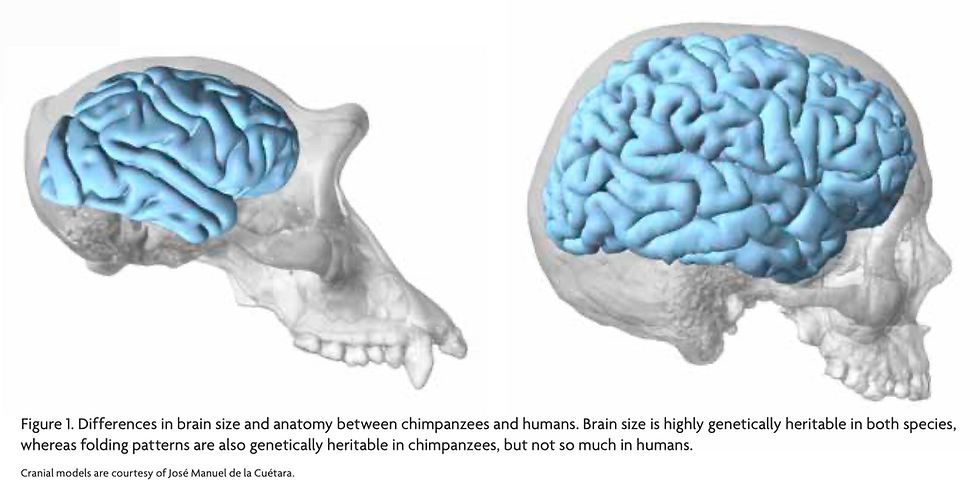Models of brain Asymmetry in Emotional Processing & The Frontal Laterality of Emotion
- Wu, Bozhi

- Nov 10, 2018
- 3 min read
Updated: Mar 8, 2019

Original Paper By:
Nelson Torro Alves et al. & Dennis Hofman
Right Hemisphere Hypothesis
States a dominant role for the right hemisphere in the processing of all emotional components.
The Valence Hypothesis
Left PFC is involved in the processing of positive emotions, whereas the right PFC is involved the processing of negative emotions.
The Motivational Approach-Withdrawal Hypothesis
Happiness, surprise, and anger are classified as approach emotions since they indicate a drive of the individual toward the environmental stimuli. (Left) Sadness, fear, and disgust are associated with withdrawal behaviors because they tend to lead the individual away from the environmental sources of aversive stimulation. (Right)
The negative/positive and the approach/withdrawal models are very similar but disagree on the classification of the emotion of anger. In the negative/ positive model, anger is considered a negative emotion and grouped together with sadness, fear, and disgust. However, in the approach/withdrawal model, anger is considered as an approach emotion, since it drives the individual to the fight and the sources of stimulation, and is therefore assigned to the same category as happiness and surprise. In spite of this disagreement, both the valence and approach-withdrawal hypotheses are similar and have received strong support from many studies in the last decades (Demaree et al., 2005).
LeDoux’ Model of Emotive Processing
Two Pathways:
The first pathway involves a fast thalami-amygdaloid route, and tables rapid reflex-like actions in terms of fight-flight behaviour. The second pathway, a relatively slower thalami-cortical route operating in parallel with the fast thalami-amygdaloid route involves the visual cortex, and allows a more elaborate cognitive evaluation of the affective stimulus.
Methods for Studying Brain Asymmetry
Divided Visual Field TechniqueThe exposition time must be sufficiently brief to prevent that eye movements expose the visual stimulus to both hemiretinas (Sergent, 1995).The stimulus must be presented to the left or to the right of the fixation point, in the periphery of the visual field
Amygdala
Associated with negative affect.
Recent studies indicate that the amygdala plays an important role in directing one’s attention to emotionally salient stimuli and orienting the processing of stimuli that have a major importance for the individual (Davidson, 2003).
The Prefrontal Cortex
Emotion-based Decision Making System
The orbital and ventral areas of the frontal cortex are implicated in the representation of reward and punishment. O’ Doherty, Kringelbach, Rolls, Hornak, and Andrew (2001) showed that left orbitofrontal areas are especially responsive to reward, whereas areas in the right orbitofrontal cortex are more activated during punishment.
Absolute Dominance —> Relative Dominance
Even strong lateralized functions, such as language, are known to be distributed in both hemispheres. The spoken language, for example, requires structures of the left hemisphere for generating grammatical sentences and syntax rules (e.g. Broca’s area), whereas structures of the right hemisphere participate adding the proper emotional intonation to speech (prosody).
Perception of Emotion
Experience of Emotion
Expression of Emotion
In the cognitive and affective neurosciences, one of the few instruments able to demonstrate causal relationships between brain and behaviour is transcranial magnetic stimulation (TMS) (Schutter, van Honk, & Panksepp, 2004). TMS is a safe, non-invasive technique which is based on Faraday’s law of electromagnetic induction, and uses magnetic fields to modulate cortical brain activity (for reviews see Bohning, 2000; Schutter & van Honk, 2002).
TMS is applied repetitively (rTMS) with frequencies around 1 Hz cortical excitability is reduced, whereas stimulation frequencies of 5 Hz and greater increase cortical excitability (Wassermann, 1998).
Bibliography
Alves, N. T., Fukusima, S. S., & Aznar-Casanova, J. A. (2008). Models of brain asymmetry in emotional processing. Psychology & Neuroscience, 1(1), 63–66. https://doi.org/10.3922/j.psns.2008.1.010







Comments